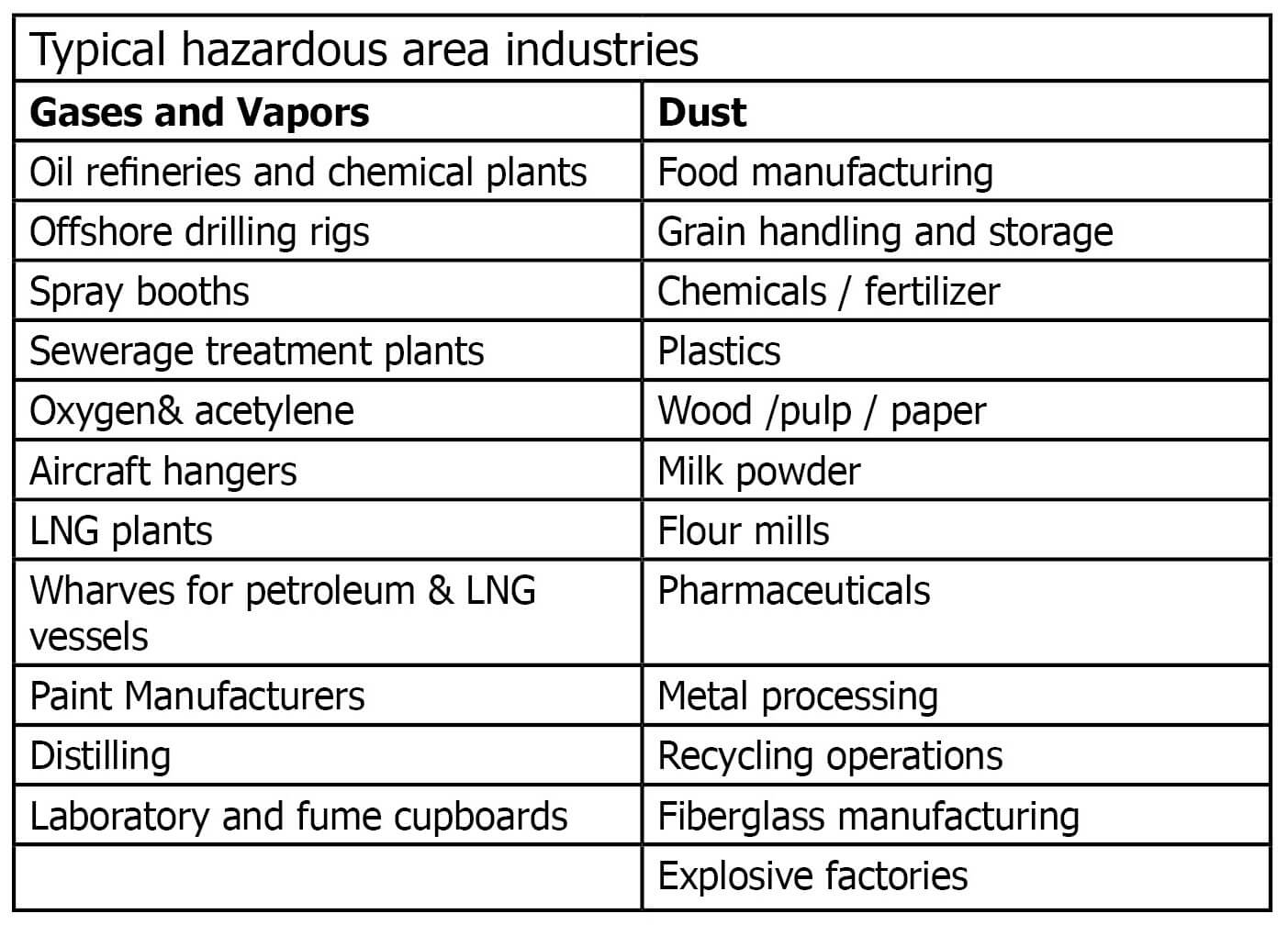The Best Guide To Roar Solutions
The Best Guide To Roar Solutions
Blog Article
Roar Solutions - Truths
Table of ContentsThe 30-Second Trick For Roar SolutionsThe 25-Second Trick For Roar SolutionsSome Ideas on Roar Solutions You Need To Know
In order to safeguard installations from a potential surge a technique of evaluating and identifying a possibly unsafe location is called for. The objective of this is to make certain the appropriate selection and installment of equipment to inevitably stop a surge and to ensure safety of life.
(http://www.askmap.net/location/7184026/australia/roar-solutions)
No tools must be mounted where the surface temperature of the tools is higher than the ignition temperature of the provided risk. Below are some common dust hazardous and their minimum ignition temperature. Coal Dirt 380C 225C Polythene 420C (melts) Methyl Cellulose 420C 320C Starch 460C 435C Flour 490C 340C Sugar 490C 460C Grain Dirt 510C 300C Phenolic Material 530C > 450C Aluminium 590C > 450C PVC 700C > 450C Residue 810C 570C The chance of the hazard being present in a concentration high enough to create an ignition will certainly vary from location to area.
Hazardous area electrical tools maybe developed for usage in higher ambient temperature levels. Field Repair Service By Authorised Employee: Complicated testing may not be needed nonetheless particular procedures might require to be adhered to in order for the equipment to maintain its third party score. Each item of tools with a hazardous score must be reviewed separately.
Not known Facts About Roar Solutions
The equipment register is a detailed database of equipment records that includes a minimum set of areas to identify each item's area, technological specifications, Ex lover classification, age, and environmental data. This details is essential for tracking and taking care of the tools properly within harmful locations. In comparison, for periodic or RBI tasting inspections, the quality will certainly be a combination of In-depth and Close examinations. The proportion of Comprehensive to Close examinations will certainly be figured out by the Tools Threat, which is examined based on ignition threat (the possibility of a resource of ignition versus the likelihood of a flammable ambience )and the unsafe location classification
( Area 0, 1, or 2). This variation will certainly also affect the resourcing requirements for job preparation. As soon as Lots are specified, you can create sampling plans based on the example dimension of each Whole lot, which refers to the number of random devices products to be checked. To establish the required sample dimension, two facets need to be assessed: the dimension of the Lot and the category of examination, which suggests the level of initiative that should be applied( minimized, regular, or enhanced )to the assessment of the Lot. By integrating the classification of inspection with the Great deal dimension, you can after that develop the suitable being rejected standards for a sample, indicating the allowed variety of malfunctioning items discovered within that example. For even more details on this procedure, please describe the Energy Institute Guidelines. The IEC 60079 basic suggests that the optimum interval between evaluations must not go beyond 3 years. EEHA evaluations will likewise be carried out outside of RBI campaigns as part of arranged maintenance and equipment overhauls or repair services. These examinations can be attributed towards the RBI sample dimensions within the influenced Whole lots. EEHA inspections are performed to recognize mistakes in electric tools. A heavy racking up system is essential, as a single tool might have several faults, each with varying levels of ignition risk. If the combined rating of both examinations is much less than twice the fault score, the Whole lot is regarded appropriate. If the Great deal is still considered inappropriate, it should undergo a full assessment or validation, which might trigger stricter evaluation procedures. Accepted Whole lot: The root causes of any kind of mistakes are recognized. If an usual failing mode is located, extra equipment might require maintenance. Mistakes are classified by intensity( Security, Integrity, Home cleaning ), making certain that immediate issues are assessed and resolved immediately to alleviate any effect on safety and security or procedures. The EEHA data source must track and tape-record the lifecycle of faults in addition to the rehabilitative actions taken. Applying a robust Risk-Based Examination( RBI )method is vital for guaranteeing conformity and security in taking care of Electric Devices in Hazardous Areas( EEHA) (hazardous area course). Automated Fault Rating and Lifecycle Management: Effortlessly take care of mistakes and track their lifecycle to improve examination accuracy. The introduction of this assistance for risk-based evaluation better enhances Inspectivity's placement as a best-in-class solution for governing conformity, in addition to for any asset-centric evaluation use case. If you have an interest in finding out more, we welcome you to ask visit the site for a demo and discover how our option can change your EEHA management processes.
Roar Solutions - The Facts

In regards to eruptive danger, a hazardous location is a setting in which an eruptive ambience exists (or may be expected to be existing) in quantities that need special precautions for the construction, installation and usage of tools. eeha. In this short article we check out the challenges faced in the office, the threat control procedures, and the needed competencies to function safely
It issues of modern life that we make, keep or deal with a series of gases or fluids that are regarded flammable, and a range of dirts that are considered combustible. These substances can, in specific conditions, form explosive environments and these can have major and tragic repercussions. A lot of us are acquainted with the fire triangle get rid of any among the three aspects and the fire can not occur, however what does this mean in the context of dangerous locations? When damaging this down right into its easiest terms it is essentially: a mix of a specific quantity of release or leakage of a particular material or material, combining with ambient oxygen, and the visibility of a source of ignition.
In most circumstances, we can do little regarding the degrees of oxygen airborne, however we can have considerable impact on sources of ignition, as an example electric tools. Dangerous areas are recorded on the harmful location classification drawing and are recognized on-site by the triangular "EX LOVER" indicator. Below, among various other crucial info, zones are split right into 3 kinds relying on the hazard, the possibility and period that an explosive atmosphere will certainly exist; Zone 0 or 20 is deemed the most hazardous and Zone 2 or 22 is considered the least.
Report this page